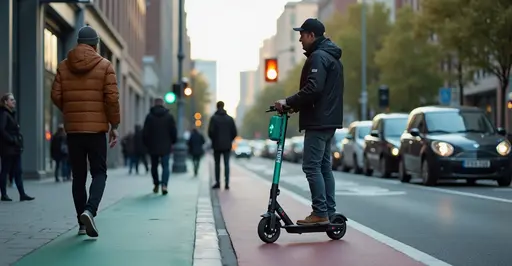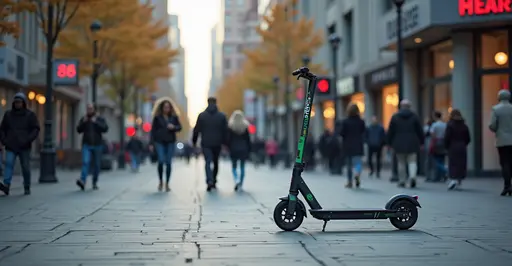Shared mobility faces major 2025 regulatory updates focusing on safety, data sharing, and parking solutions. Cities adopt MDS for real-time monitoring while federal battery safety regulations advance. Parking infrastructure improvements and accident prevention strategies aim to balance innovation with public safety.

Shared Mobility Safety and Regulatory Landscape in 2025
The shared mobility sector, encompassing e-scooters, bikes, and other micromobility options, is undergoing significant regulatory transformations in 2025. Cities worldwide are implementing new safety measures, data-sharing requirements, and parking solutions to address growing concerns about public safety and urban infrastructure.
Data Sharing and Regulatory Frameworks
One of the most significant developments in 2025 is the widespread adoption of standardized data-sharing protocols. The Mobility Data Specification (MDS) has become the industry standard for communication between cities and private mobility providers. This open-source framework enables real-time vehicle tracking, policy enforcement, and safety monitoring. 'MDS gives cities the digital tools they need to manage shared mobility effectively while protecting public safety,' says transportation expert Maria Rodriguez.
In Seattle, the Shared Micromobility Program requires operators to provide real-time data through the General Bikeshare Feed Specification (GBFS), creating comprehensive dashboards that track trip patterns and fleet management. This data-driven approach helps cities identify high-risk areas and implement targeted safety interventions.
Safety Statistics and Accident Prevention
Recent data from the National Highway Traffic Safety Administration shows an 8.2% decline in traffic fatalities during the first half of 2025, the largest first-half reduction since 2008. While this includes all vehicle types, shared mobility safety improvements have contributed to this positive trend.
However, specific challenges remain. A New York City Comptroller's report found that while micromobility vehicles account for only 1.8% of pedestrian fatalities, there has been a significant uptick in incidents since e-bikes were legalized in 2020. 'We're seeing a concerning pattern of unsafe low-cost products flooding the market,' notes safety analyst David Chen.
Federal Regulatory Developments
At the federal level, the Consumer Product Safety Commission has been navigating a complex regulatory process for micromobility products. The proposed rule on lithium-ion batteries has faced multiple setbacks, including being voted on, withdrawn, re-noticed, and withdrawn again in 2025. The regulations would have required micromobility products to meet specific safety standards including UL 2849-20 for e-bikes and UL 2272-24 for other devices.
Meanwhile, Congress is showing increased interest in federal regulation, with the House passing H.R. 973, the 'Setting Consumer Standards for Lithium-Ion Batteries Act.' This legislation would give the CPSC 180 days to promulgate regulations if passed by the Senate.
Parking Solutions and Infrastructure
Parking management has become a critical focus area for cities implementing shared mobility programs. Research published in Transportation Research Interdisciplinary Perspectives identifies best practices for implementing shared micromobility parking infrastructure globally. Key strategies include using trip demand data to determine parking locations, integrating parking into broader active transportation infrastructure, and placing parking at intersections to enhance safety.
The United Nations 2025 report on dedicated parking for micromobility emphasizes the importance of organized parking infrastructure to reduce sidewalk clutter and improve pedestrian safety. Cities are implementing dedicated parking corrals, geofenced parking zones, and smart parking solutions that use IoT sensors and AI algorithms.
City-Level Implementation
Bellevue, Washington is currently updating its micromobility regulations to better regulate motorized foot scooters. The city's Transportation Department is developing clearer policies that promote public safety and address community needs. 'Our goal is to establish regulations that balance innovation with public safety concerns,' explains Bellevue Transportation Director Sarah Johnson.
Similar regulatory updates are occurring in cities across the United States and Europe, with many jurisdictions adopting speed limits, age restrictions, and operational requirements for shared mobility services. The European Union continues to classify micromobility vehicles under the L category, exempting them from registration fees and insurance requirements while allowing use of bicycle infrastructure.
Future Outlook
The shared mobility market continues to grow significantly, expanding from $198.23 billion in 2024 to $217.80 billion in 2025, with projections reaching $356 billion by 2030. This growth is driving continued innovation in safety technologies, including advanced braking systems, improved battery safety, and enhanced rider education programs.
As cities continue to refine their regulatory approaches, the focus remains on creating safe, sustainable transportation options that complement existing public transit systems. The integration of shared mobility into broader urban transportation networks represents the future of urban mobility, with safety and regulation playing crucial roles in ensuring successful implementation.

 Nederlands
Nederlands
 English
English
 Deutsch
Deutsch
 Français
Français
 Español
Español
 Português
Português









